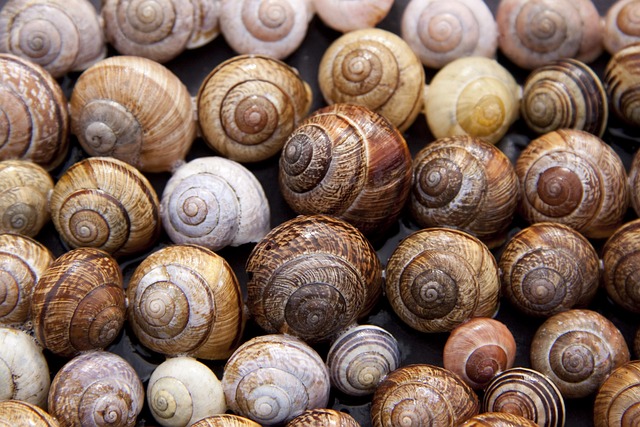Gourami fish are a popular addition to many aquariums due to their vibrant colors and peaceful nature. However, many aquarium owners wonder what their gourami fish eat and if they can help control snail populations in their tanks.
The answer to whether gourami fish eat snails is not straightforward, as it depends on the gourami species and the snails’ size.
Some gourami species, such as the three-spot gourami and the kissing gourami, have been known to eat snails.
These fish have a varied diet and will consume various foods, including insects, crustaceans, and small fish. However, it’s important to note that gourami fish are not solely carnivorous and require plant matter.
While gourami fish may eat snails, they may be unable to control a snail infestation. Snails reproduce quickly and can quickly overrun an aquarium if not correctly managed.
Additionally, some snail species, such as the apple snail, are too large for gourami fish to consume.
Therefore, aquarium owners must take a multi-faceted approach to snail control, including manual removal and chemical treatments if necessary.
Snail Consumption in Gourami Fish
Dietary Preferences
Gourami fish are omnivores and consume a variety of food sources in their natural habitat. In captivity, they are typically fed a combination of commercial fish food, live or frozen food, and fresh vegetables.
However, their dietary preferences may vary based on their species and individual preferences.
Snails as a Food Source
Gourami fish have been observed consuming snails in their natural habitat. In captivity, they may also consume snails if they are present in their aquarium.
Snails can provide a source of protein and calcium for gourami fish. However, it is essential to note that not all snail species are suitable for consumption by gourami fish. Some snails may be toxic or carry diseases that can harm the fish.
Health Implications
Consuming snails can have health implications for gourami fish. Some snail species may carry parasites or diseases that can infect the fish.
Additionally, consuming too many snails can lead to digestive problems and constipation in gourami fish. It is essential to monitor the amount of snails consumed by gourami fish and ensure that they are not the sole source of their diet.
In conclusion, gourami fish may consume snails as part of their omnivorous diet.
However, it is essential to ensure that the snails are safe for consumption and not the sole source of their diet to avoid health implications.
Factors Influencing Snail Consumption
Gourami Species
Different species of gourami fish have varying levels of snail consumption.
Some species, such as the Dwarf Gourami, are known to consume snails more frequently than others.
Snail Species
Not all snail species are equal in being consumed by gourami fish. Some species, such as the Malaysian Trumpet Snail, have a hard shell that is difficult for gourami to break.
Other species, such as the Ramshorn Snail, have a softer shell that is easier for gourami to consume. It is essential to research the specific snail species before introducing them to an aquarium with gourami.
Aquarium Conditions
The conditions of the aquarium can also influence snail consumption by gourami fish. Factors such as water temperature, pH levels, and the presence of other food sources can affect the likelihood of gourami-consuming snails.
For example, if the aquarium is overpopulated with other fish, gourami may not consume snails as frequently.
It is important to note that while gourami fish may consume snails, they should not be relied upon as the sole means of snail control in an aquarium.
Proper aquarium maintenance and other snail control methods should also be employed to maintain a healthy and balanced ecosystem.
Alternatives to Snails in Gourami Diet
Commercial Fish Food
Commercial fish food is a readily available source of nutrition for gourami fish. These foods come in various forms, including flakes, pellets, and frozen options.
Pellets are the most popular choice for gourami fish as they are easy to digest and provide a balanced diet. Choosing a high-quality food formulated explicitly for gourami fish is vital to ensure they receive all the necessary nutrients.
Live Prey
Live prey is a natural food source for gourami fish. They enjoy hunting and eating small insects, crustaceans, and other small aquatic creatures
. Live prey options include brine shrimp, daphnia, and bloodworms. These can be purchased from pet stores or bred at home.
Vegetation
Vegetation is an essential part of a gourami fish’s diet. They enjoy eating algae, aquatic plants, and vegetables like lettuce and spinach.
Feeding them a variety of vegetation will ensure they receive all the necessary nutrients. It is important to note that some plants are toxic to gourami fish, so it is essential to research which plants are safe to eat.
In conclusion, gourami fish have a varied diet and can eat various foods. Snails are not the only option for their diet, and many alternatives are available.
A balanced diet that includes commercial fish food, live prey, and vegetation will ensure that gourami fish remain healthy and happy.
Conclusion
In conclusion, gourami fish have a reputation for being snail-eaters. While they do consume snails, it is not a guarantee that they will eat them. The diet of a gourami fish varies and depends on factors such as the species, age, and food availability.
It is important to note that while gourami fish may eat snails, they are not reliable for controlling snail populations in aquariums. It is recommended to address the root cause of the snail infestation, such as overfeeding or poor maintenance, rather than relying solely on fish to control the problem.
Overall, gourami fish can be a valuable addition to an aquarium for their unique appearance and behavior. However, it is crucial to research their specific dietary needs and compatibility with other fish before adding them to a tank.




